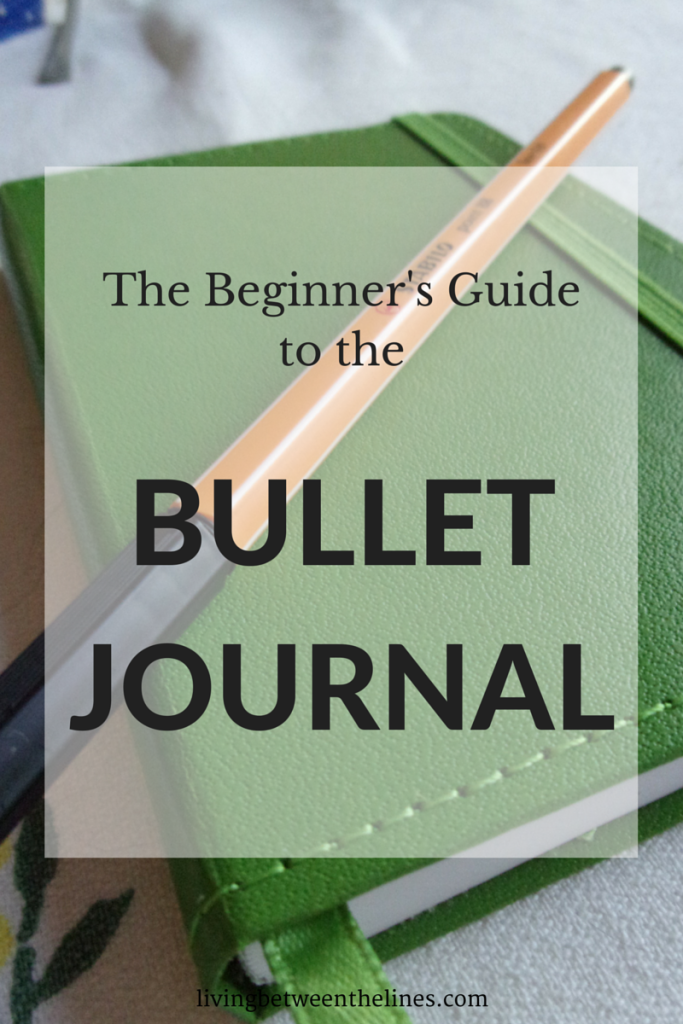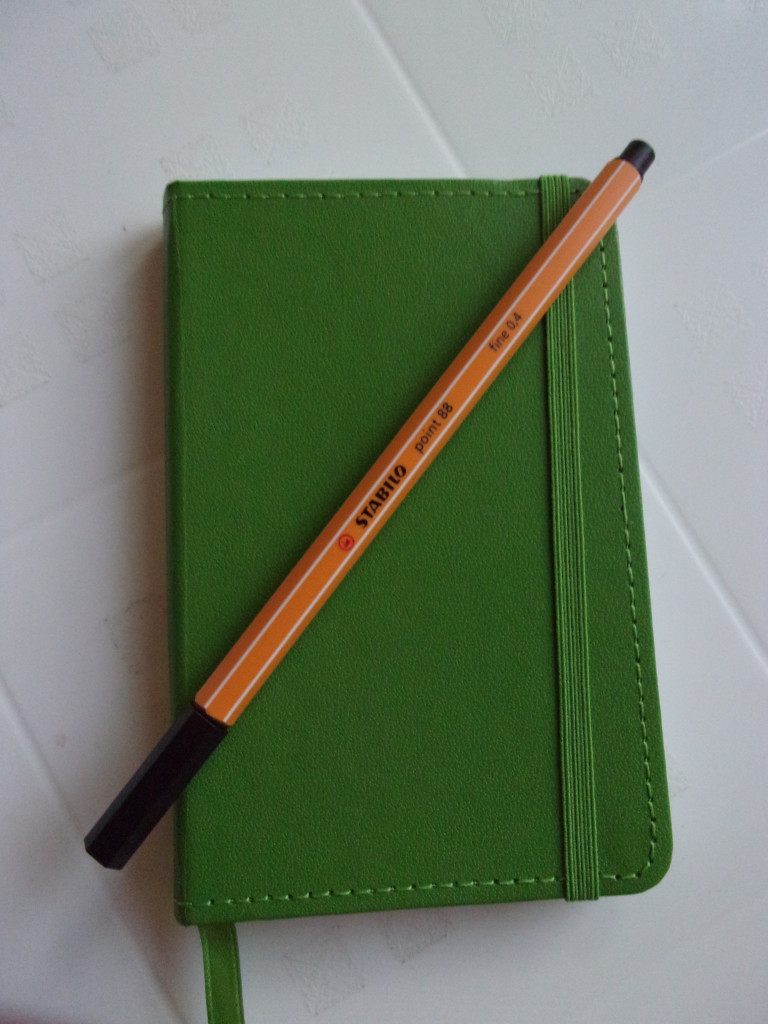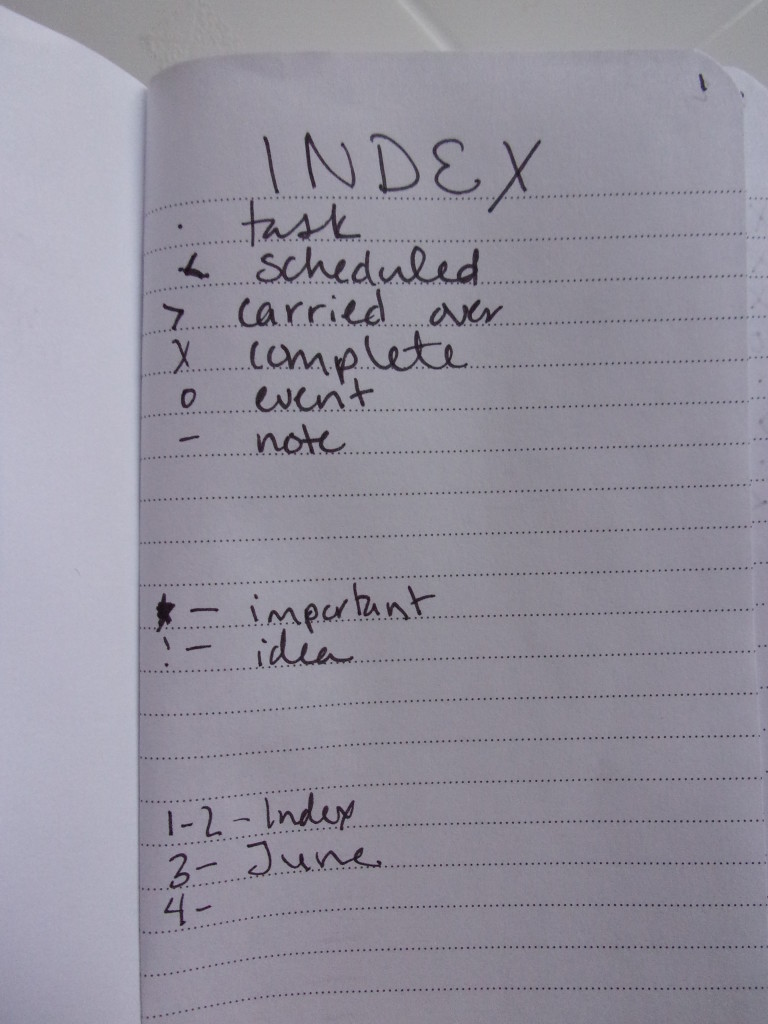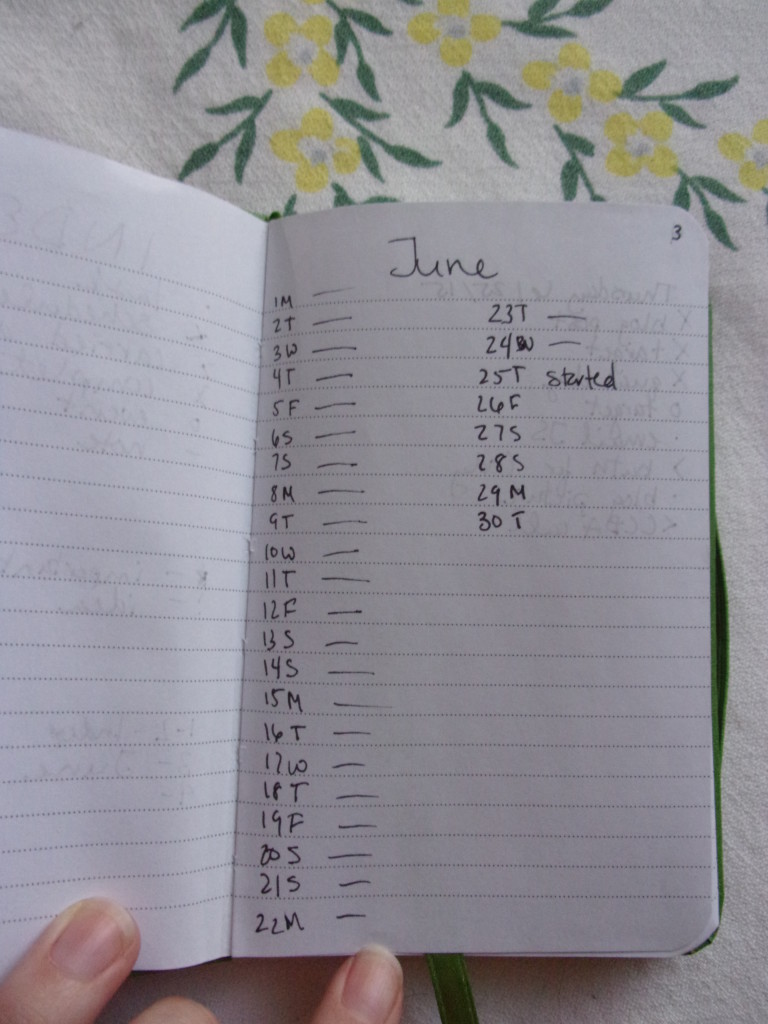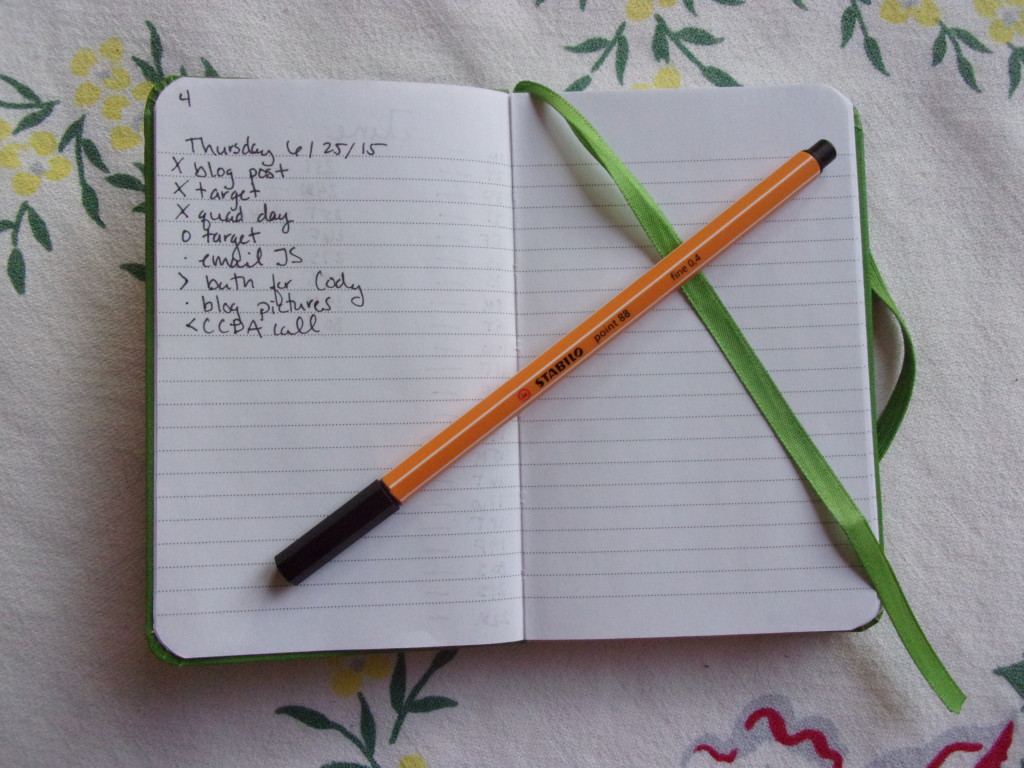Today, I did something I’ve been meaning to do all summer – I started a bullet journal. This journaling system is pretty much a cult phenomenon in some communities. Think of it as the sleeper hit of diaries. What it is, at its root, is “to do” list in a very specific format, developed by Ryder Carroll, who’s made his ideas available for free over at his website. And let me tell you, it’s extensive. The bullet journal is billed as “the analog system for the digital age,” and to some extent, that’s the appeal. As much fun as my productivity apps are, there’s something innately satisfying about taking a pen to paper, or the physical action of drawing an “x” through a bullet point to mark it as done. The bullet journal website has a huge number of complex “extensions” and “modules” to the basic bullet journal formula in its library, but for beginners like me (and, presumably, you!) a simple approach might be best at first.
Beginner’s Guide to The Bullet Journal
The Journal
Obviously, to start bullet journaling, you’ll need a journal in which to bullet, like so:
If you’re stressing over notebook choice, I have an entire post on finding the perfect bullet journal notebook. I picked this one up at Walmart for less that $2. For me, it’s perfect – its size makes it portable, the durable vinyl cover and elastic band protect the pages, and the ribbon bookmark will make accessing certain pages a breeze. I have very specific criteria for notebook purchases, too. The notebook must willingly stay open on its own, the pages must be thick enough to turn easily, and, most importantly, the paper must be white. Cream or yellowish paper is somehow deeply annoying to me.
Some people find that simple ruled pages don’t suit them, so a graph-paper or even dotted journal might be worth looking at. I’ve found notebooks at Target that have all the months and the numbers 1-31 printed at the top, to make dating pages easier. Spiral bound notebooks work just as well as journal bound ones. What I’m getting at is that this journal needs to fit you and your needs, so don’t be afraid to be picky about it. Check here for a list of popular brands! I think the one universal criteria, though, should be durability. Ideally, your bullet journal will be around for a while. The creator has been keeping a journal a year for over twenty years, and can look back on any year at his leisure, and that sounds incredible to me.
The Index
From what I understand, this is apparently the most important part of any bullet journal. Since the whole point of the journal is to keep you organized, a well-structured index will save your life. After all, you’re hoping for a stress free semester. In addition to containing a legend of all the bullets you use and their meanings, it’ll give you a way to navigate whatever you choose to put in your journal with ease. The most common use for bullet journals is for daily to-do lists, and you can keep track of what pages hold what months easily from your index. But the beauty of the system is that it’s flexible enough to do so much more. From monthly overviews to food diaries to ongoing projects, the bullets can be modified to fit all of your needs. So far, I’m just focusing on my day-to-day tasks and monthly overviews for planning, so my index looks like this:
The bullets each represent a kind of note. A bullet (•) denotes a task I need to do. I can modify the symbol by putting an X through it, to show it’s been completed, arrowing left (<) to indicate that I’ve scheduled it, or arrowing right (>) to carry it over to the next list. An open circle (O) denotes an event to remember. A dash (—) is any important note from the day. These three types of symbols (and their variations) are the bread and butter of bullet journaling. Also listed are the margin marks, which can go to the left of a bullet, circle, or dash to draw extra attention to it. I only have two in my Index so far, with room to grow. But a star marks a task, note, or event as important, and an exclamation mark can signal ideas. I figure the latter will adorn a lot of notes containing blog post ideas. Below that, I’ve started a sort of table of contents, for where I can find each type of list in my bullet journal. Which brings us to…
The Content
The whole point of a bullet journal is to fill it up with lists that need your attention. The Bullet Journal website advises that you should keep your bullets brief and factual, rather than burdened with emotions. But hey, it’s you journal and your life, so do you. My only two “lists” at the moment are an overview of June, and today’s to-do list. I love the idea of the monthly overview, as it gives you a space to mark down any commitments as they come up. These monthly overviews will be perfect for using with a syllabus. Since I started this journal pretty well into June, my overview looks like this:
As you can see, it’s pretty bare bones. (I’ve since updated my monthly (and yearly!) spreads – check it out!) But if I have to schedule something, it can go right in the journal for easy reference when I draw up that day’s list. The daily lists are really why I started this journal. I might feel comfortable lying about checking off a task on one of my favorite productivity apps, but there’s something about an actual written record that keeps me honest. For example, here’s June 25th’s entry:
I took my pictures after I wrote my post, so the post is X-ed off. I had already visited Target, and made sure my organization had a space at my university’s Quad Day. I also marked down an event – I applied to Target today. Later, I thought to add in an email I needed to send, the bath I needed to give my dog, the blog pictures I needed to take, and the conference call I needed to work out. Still haven’t sent that email, so it’s still a bullet. Rain postponed my dog’s bath, so it’s carrying over to tomorrow. Obviously, I hadn’t taken the pictures for my post quite yet. And I emailed about the conference call, so that’s now settled on my end.
Now, I always use productivity apps that give me some sort of reward (though usually not a real one) for checking things off my list. And marking things I hadn’t finished as “done” would be tempting, in the face of that reward. And worse, those tasks would probably disappear, making it more likely that I would forget to do them altogether. But with the bullet journal, I have a permanent record of what I’ve done and what I haven’t, and it’ll be easy to go back and look at the kind of tasks I postpone, so I know what I need to work on. I’m really excited to see how this system works out for me.
There’s just one problem.
My cat has claimed the journal as her own:
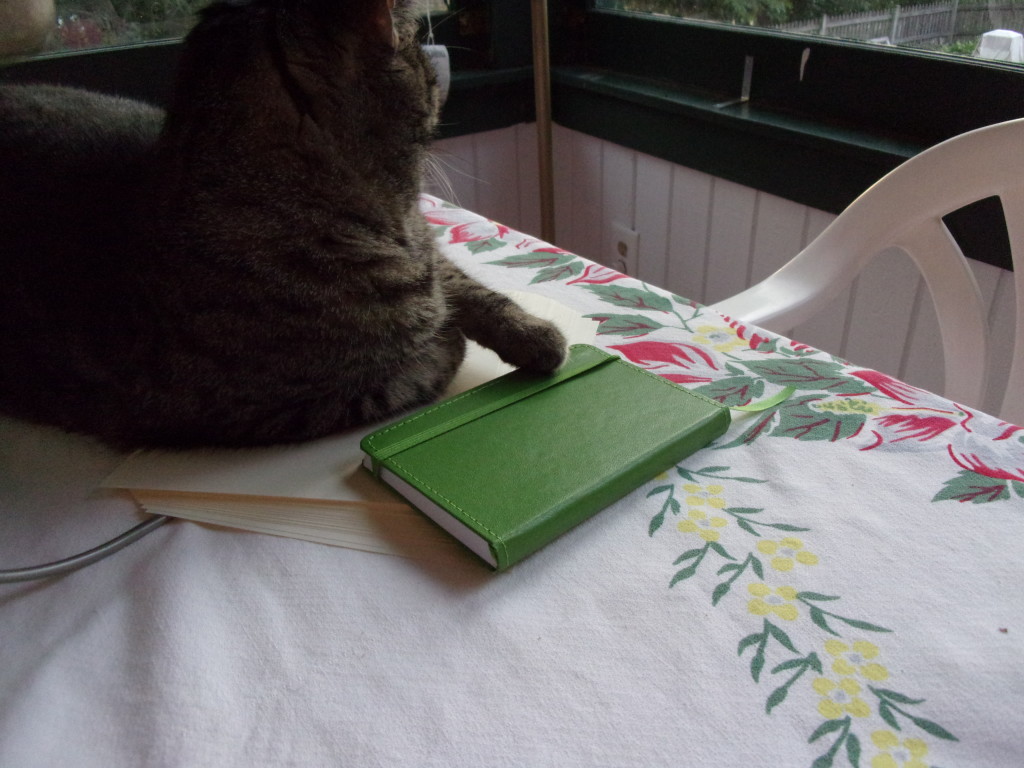
She might seem nonchalant, but make no mistake, the single paw touch is a powerful statement of ownership.
Aside from that, though, everything’s looking great! If any of you are considering bullet journaling, let me know! I’d love to keep in touch with you and see if it works out. And if this does end up helping me, you can expect a few more posts on getting the most out of your bullet journal. If you want to stay updated, you can subscribe to this site using the box in my sidebar. If you subscribe, you’ll get an email about each new post from Living Between the Lines, and we can stay in touch!

